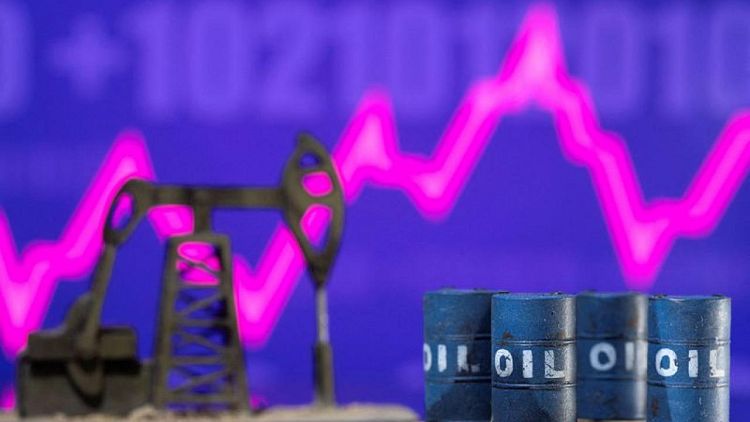By Koh Gui Qing
NEW YORK -Global stocks fell on Thursday as investors sold risky assets due to concerns about possible recession and the Russian-Ukranian war, and oil prices plunged over $5 a barrel as Washington contemplated releasing more U.S. emergency oil reserves.
U.S. and European stocks are set for their biggest quarterly loss since the first quarter of 2020, when the outbreak of the COVID-19 pandemic briefly sent the global economy into a tailspin.
Quarter-end portfolio rebalancing boosted demand for bonds and held down yields, though a closely watched part of the U.S. Treasury yield curve flattened a touch after inverting briefly on Tuesday. Many view an inverted yield curve, in which short-term Treasuries yield more than longer-term debt, as a harbinger of a recession. [US/]
"An inverted Treasury yield curve is one signal that future U.S. equity returns will be disappointing," said Nicholas Colas, Co-founder of DataTrek Research.
"Can we escape the fate of low or negative returns in 2022 if 10-year Treasury yields drop below two-years? Possibly, but not if geopolitical risks and their effect on oil prices continue or grow."
The MSCI World Equity index was down 0.68%, while Europe's STOXX 600 eased 0.94%.
By late morning in New York, the Dow Jones Industrial Average fell 0.58%, the S&P 500 fell 0.49%, and the Nasdaq Composite shed 0.63%.
For the quarter, the S&P 500 is on track for a 3% drop, its steepest quarterly decline in two years. Europe's STOXX 600 is headed to drop more than 6%, which would be its biggest quarterly drop since the start of 2020 when it plunged 23%.
Early this week, global stocks had rallied on signs of progress in peace talks between Ukraine and Russia. But optimism petered out after Ukrainian President Volodymyr Zelenskiy said no quick resolution is expected and the country prepared for new Russian attacks.
In Europe, inflation data showed record-high price rises in France in March and a 7% year-on-year rise in Italy, following elevated readings from Germany and Spain a day earlier.
Surging price pressures in many major economies have sealed expectations that central banks will raise interest rates. Investors worry that aggressive tightening in the United States and other countries will bring on recessions.
While European government bond yields were down on the day, the German 10-year yield was set for its biggest monthly rise since 2009.
The 10-year U.S. Treasury yield, which dipped to 2.323% on Thursday, was on track for its biggest gain in any quarter since the start of 2018.
Oil prices nursed deep losses following news that the United States was considering releasing up to 180 million barrels from its strategic petroleum reserve, part of a move to lower fuel prices.
U.S. crude fell 4.4% to $103.06 per barrel and Brent was at $108.24, down 4.59% on the day.
Oil prices had surged since Russia invaded Ukraine in late February and the United States and allies responded with hefty sanctions on Russia, the second-largest exporter of crude.
The euro was down 0.64% at $1.1087, having been boosted earlier in the week by hopes for peace in Ukraine.
The dollar was little changed against the yen, at 121.58. The yen has stabilised after Monday when it fell to its lowest since 2015 on news the Bank of Japan will buy an unlimited amount of 10-year government bonds for four days this week to keep yields low.
Rising U.S. yields have lifted Japanese yields even though inflation in Japan is below the central bank's target.
Gold edged lower, but was still set for its biggest quarterly rise since the second quarter of 2020.
In keeping with softer investor risk appetites, Bitcoin dropped 2.63% to $45,829.23.



